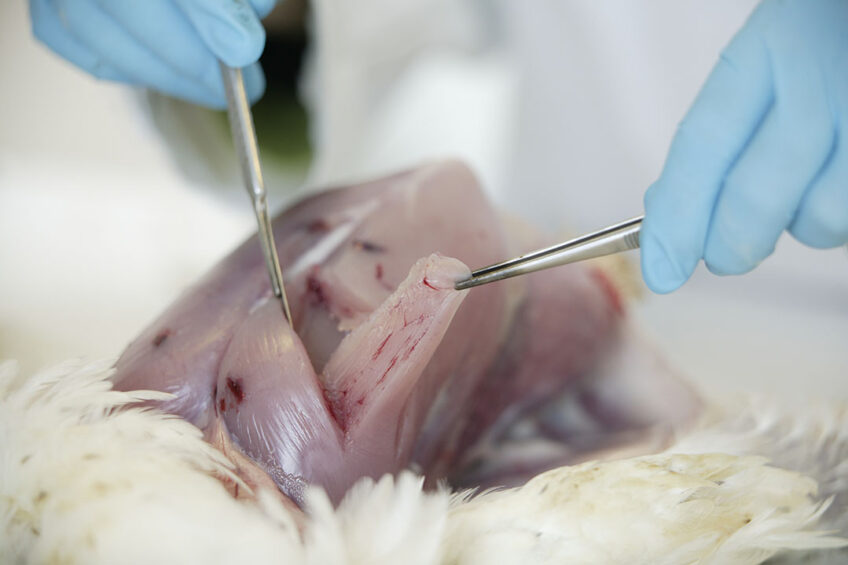White striping widely prevalent in US supermarket chicken

Investigations into the prevalence of white striping in US supermarkets have found that 99% of all store-brand chicken sold is affected by the muscle disease white striping.
White striping is a visible result of how chickens are bred for fast growth and can lead to a far higher fat content (+224%) and lower quality protein levels (-9%). It is however safe to eat and does not represent a food safety issue.
The Humane League study looked at chicken sold in major supermarkets across 29 states, including outlets run by Costco, BJ’s, Target, Trader Jo’s and Wegmans. It found moderate to severe white striping in 70% of chicken packages.
Among the other findings were:
• Some supermarkets had white stripings in 100% of packets sampled
• All 16 major supermarkets had white striping present in their standard own-brand chicken breast packages
• The worst offenders were Walmart, BJ’s and Meijer, with moderate to severe white striping in 93%, 87% and 85% respectively.
‘Consumers should be alarmed’
Commenting on the findings of the report, David Coman-Hidy, Humane League president, said consumers should be alarmed by the findings: “This disease is a visual reminder of the terrible suffering of these weeks-old animals and the control that these factory farms have over our food supply. It’s nearly impossible for Americans to find an alternative.”
White striping in fast-growing birds
White striping is a muscle disease that is reported to impact 50-96% of fast-growing chickens and is a consequence of fast growth rates. Their muscles become inflamed and die from lack of oxygen. Their bodies replace this muscle tissue with fibrous tissue and fat. This changes the appearance and texture of the meat, and crucially, reduces the nutritional value by increasing the fat content.
Evaluation of meat from slow-growing broilers
It is believed that by growing chickens in a semi-intensive system and giving them more time to attain maturity, muscle abnormalities in slower growing chickens might be reduced. A recent study evaluated meat from slow-growing broilers compared with commercial broilers. Read more…
The Humane League said just 10 years ago, white striping was hard to find with just 5% of chicken suffering. Last year, it carried out a survey on UK supermarket chicken and found 85% of birds sold had white stripe. The charity is one of a number to be calling on the poultry meat sector to move to slower growing breeds espoused by the Better Chicken Commitment (BCC).
No safety issue
The National Chicken Council said white striping was not a food safety issue and did not affect the welfare of the chicken: “Some research has found that larger bird sizes can affect the cases and severity of white striping in birds, but research has not identified one single cause. When white striping is detected, not all the birds in a flock are affected, even when they share the same genetics, management, feed environment etc. While all of the birds in a flock have a similar size and growth rate, some are affected with white striping and some are not. Slow-growing birds, organic birds and free-range birds can all have white striping too.”
The website reports that only a small percentage of chicken meat is affected by white striping. Surveys of commercial chicken flocks show that between 12 and 43% of birds are affected by white striping. Furthermore, only 3-6% of the birds affected have severe cases of white striping.
Mitigation
Research published last month by the Department of Poultry Science, Arkansas and the Department of Animal Sciences, Ohio State University (Frontiers in Physiology), said evidence suggested that changes in management and environment, specifically changes in nutrition, have been hypothesised and shown to decrease the incidence and severity of white striping and another similar myopathy, woody breast.
But improvement comes only at the cost of a decrease in yield. “Novel selection methods are being evaluated for their effectiveness in controlling the development of both woody breast and white striping in the industry to avoid further economic losses from the muscle myopathies,” the report added.













